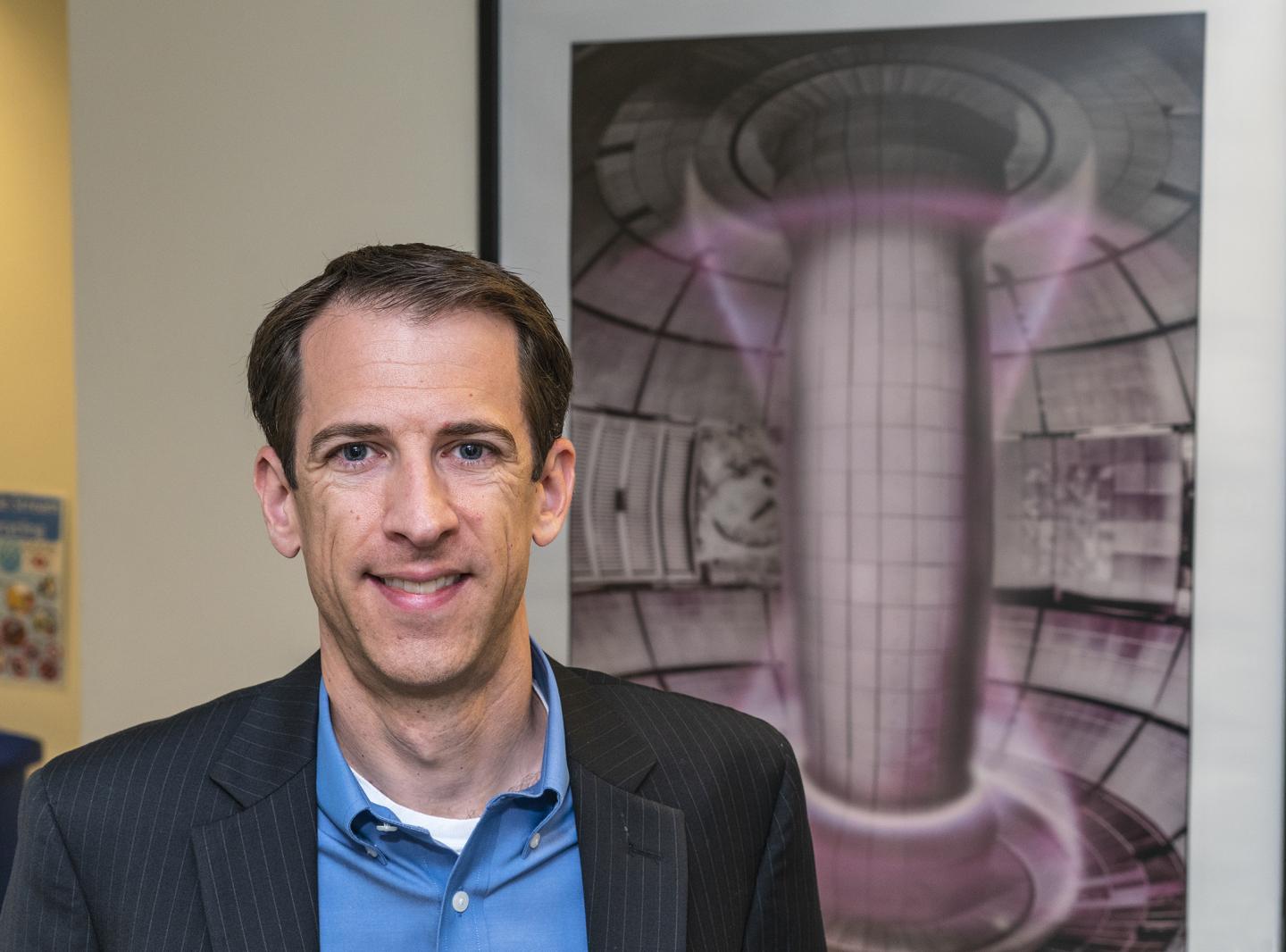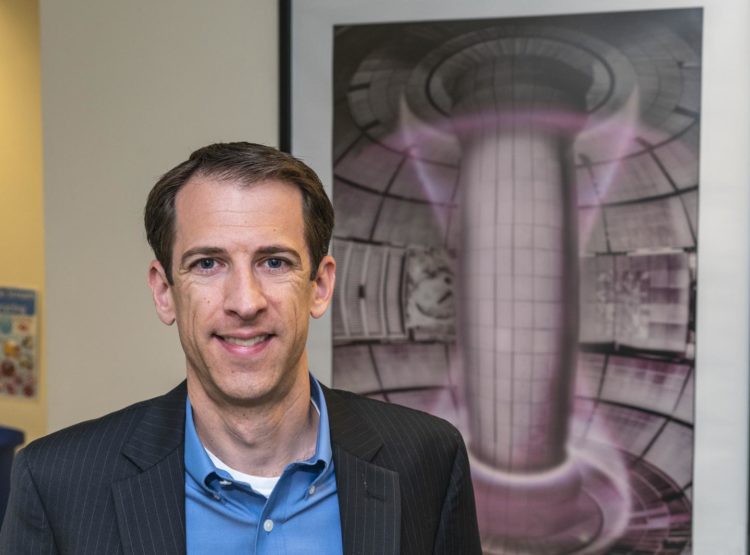
Credit: Elle Starkman/PPPL Office of Communications
How do you start a fusion reaction, the process that lights the sun and stars, on Earth? Like lighting a match to start a fire, you first produce plasma, the state of matter composed of free electrons and atomic nuclei that fuels fusion reactions, and raise it to temperatures rivaling the sun in hundreds of milliseconds.
Physicists at the U.S. Department of Energy’s (DOE) Princeton Plasma Physics Laboratory (PPPL), working with researchers at the Culham Centre for Fusion Energy (CCFE) in the United Kingdom, have constructed a simulation framework for developing and testing the plasma startup recipes for the National Spherical Torus Experiment-Upgrade (NSTX-U) at PPPL and the Mega Ampere Spherical Tokamak-Upgrade (MAST-U) at CCFE. “This is a tool to help an operator design a successful startup recipe before sitting down in the driver seat at NSTX-U or MAST-U,” said physicist Devon Battaglia, who leads the team of operators on the NSTX-U experiment and is lead author of a paper describing the model in the journal Nuclear Fusion.
Fusing plasma particles
Fusion fuses plasma particles to release massive amounts of energy. Scientists around the world are seeking to replicate the celestial process to produce a safe, clean, and virtually inexhaustible supply of power for generating electricity.
The typical recipe for forming a plasma in magnetic fusion devices called tokamaks begins by applying voltage across a gas injected into a strong magnetic field. The gas becomes plasma within a few milliseconds and quickly heats up to millions of degrees. Creating the best recipe for a successful startup calls for finely tuning the gas pressure with a consistent evolution of the electric and magnetic fields, a delicate task that falls to the operator.
The new simulation capability enables operators to quickly achieve that balance, significantly reducing the amount of time spent running experiments to find a recipe that works.
Researchers derived and validated the models in the simulation framework against data collected from past experiments on the NSTX-U and its predecessor, and the predecessor of MAST-U. Battaglia worked closely with physicists at CCFE to develop the new model, making the paper a joint effort, and will travel there again for the scheduled startup of MAST-U.
“Plasma breakdown is a key milestone for MAST-U and Devon’s work provides valuable insight into the best route to achieve startup,” said physicist Andrew Thornton, lead operator at MAST-U and coauthor of the paper. “Having Devon’s expertise on site when we restart will be immensely valuable as he has performed similar experiments on NSTX-U that can guide efforts on MAST-U.”
Providing new insights
Development of the model provides new insights into the startup of spherical tokamaks such as NSTX-U and MAST-U, which are shaped like cored apples rather than the doughnut-like shape of more widely used conventional tokamaks. The process of putting together the simulation framework has also contributed to efforts to develop computational tools for the first operation of ITER, the international tokamak under construction in France to demonstrate the practicality of fusion energy.
###
Support for this work comes from the DOE Office of Science and the RCUK Energy Programme in the UK. Coauthors of the Nuclear Fusion paper are Stefan Gerhardt and Jonathan Menard at PPPL and Thornton, Andrew Kirk, and Lucy Kogan at CCFE.
PPPL, on Princeton University’s Forrestal Campus in Plainsboro, N.J., is devoted to creating new knowledge about the physics of plasmas — ultra-hot, charged gases — and to developing practical solutions for the creation of fusion energy. The Laboratory is managed by the University for the U.S. Department of Energy’s Office of Science, which is the single largest supporter of basic research in the physical sciences in the United States and is working to address some of the most pressing challenges of our time. For more information, visit energy.gov/science.
Media Contact
John Greenwald
[email protected]
609-243-2672
Original Source
https:/
Related Journal Article
http://dx.





